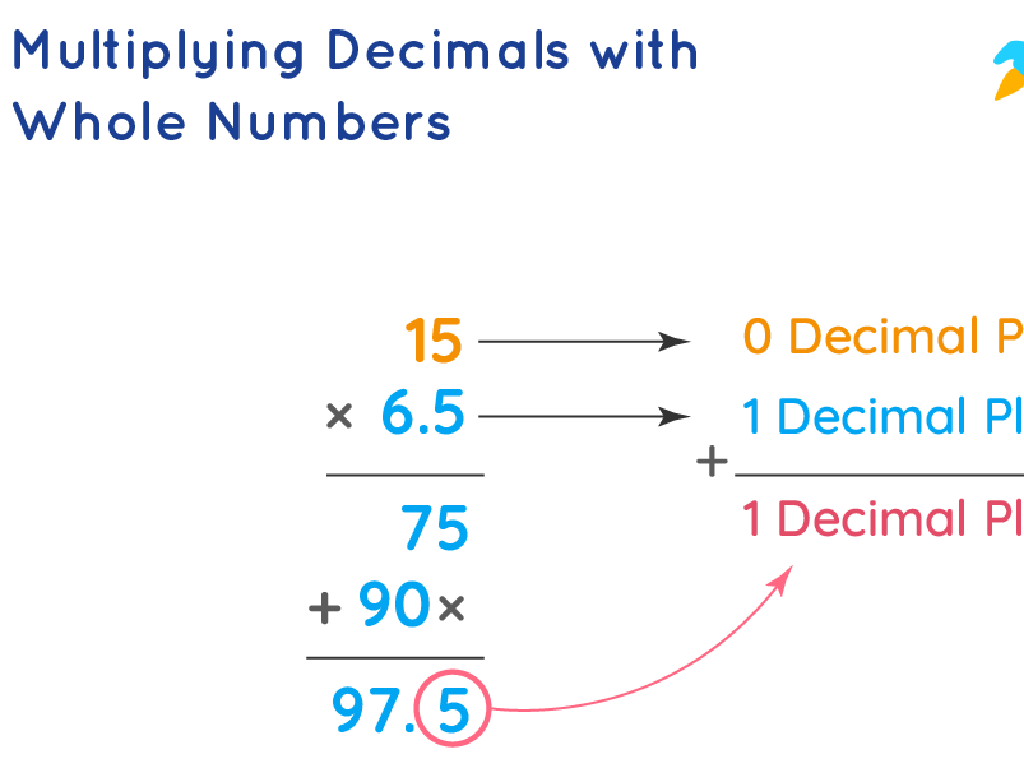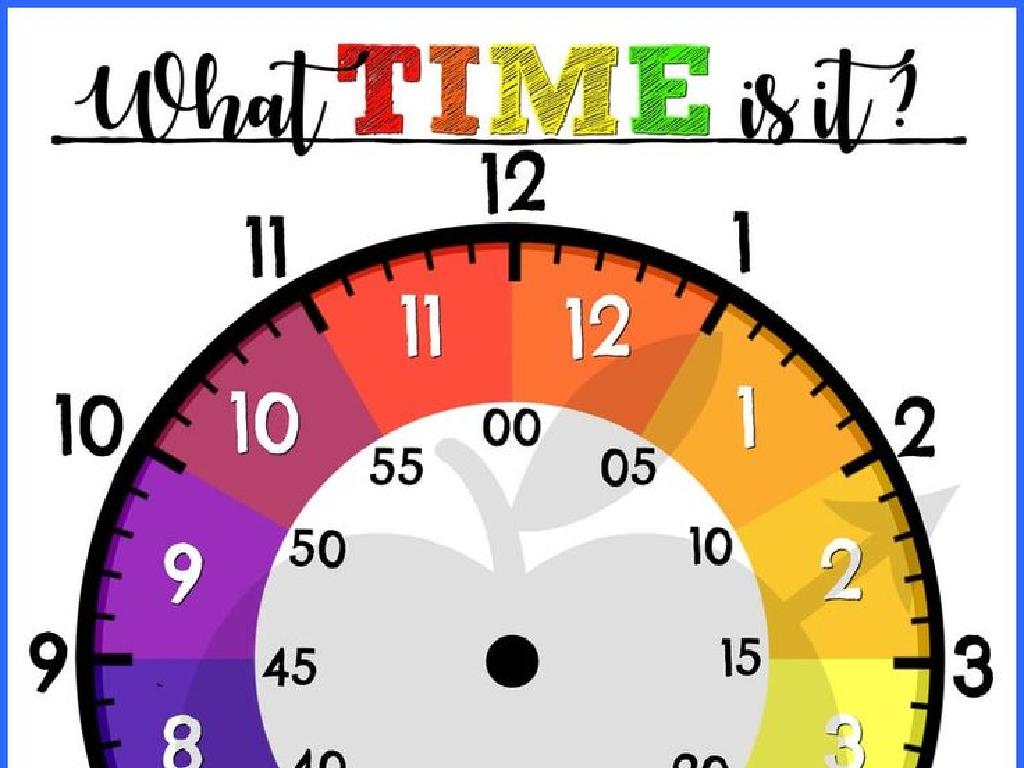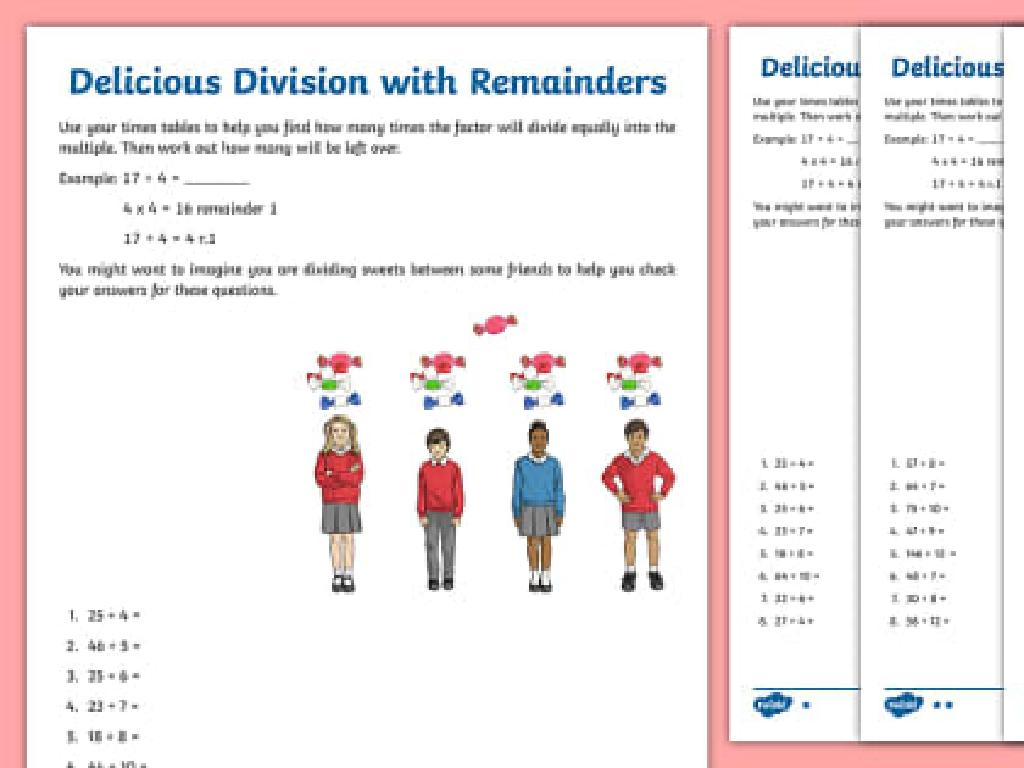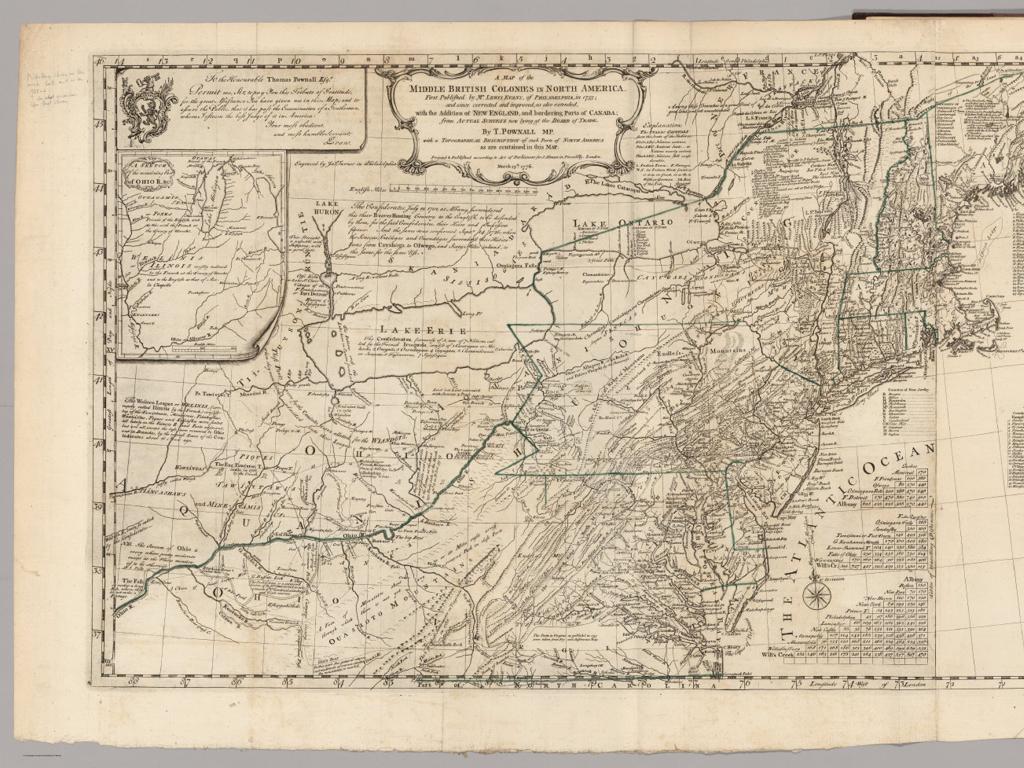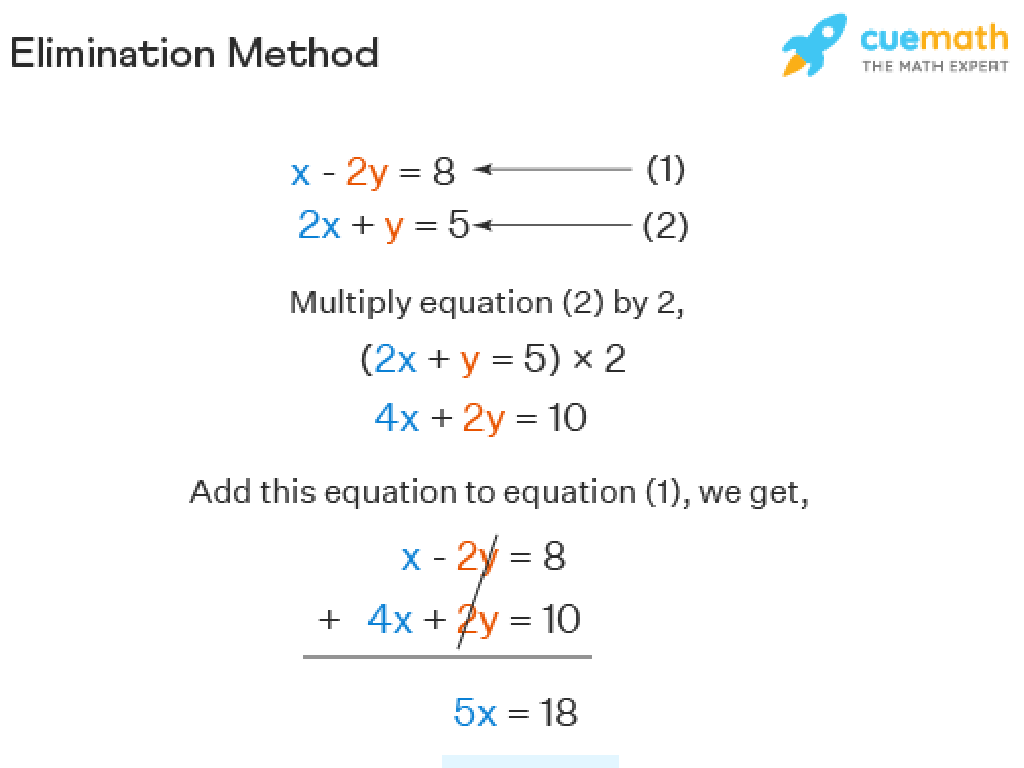Read A Map: Cardinal Directions
Subject: Social studies
Grade: Second grade
Topic: Geography
Please LOG IN to download the presentation. Access is available to registered users only.
View More Content
Welcome to Geography: Exploring Maps
– What is a map?
– A map is a picture of a place
– Maps show us places
– They help us see where things are
– Learn cardinal directions
– North, South, East, and West are main directions
– Use directions on a map
– Find which way is North, then find other directions
|
This slide introduces students to the concept of maps and cardinal directions, which are fundamental elements of geography. Begin by explaining that a map is a drawing that shows us where things are located. It’s like a picture from above. Emphasize that maps help us understand the layout of places and can guide us to where we want to go. Introduce the cardinal directions as the main points that we use to describe location and movement on a map. Use simple language and examples to explain how to find and use these directions. For instance, the sun rises in the East and sets in the West. Activities can include using a classroom compass, drawing maps of familiar places, and identifying the cardinal directions in the classroom.
Understanding Maps: Cardinal Directions
– A map is a place’s picture from above
– Imagine looking down from the sky and drawing all you see
– Maps show various landforms and paths
– They can display streets, mountains, rivers, and more
– We use maps to locate ourselves
– Find your current spot and places you’ve visited
– Maps guide us to our destinations
– Learn how to get from one place to another using a map
|
This slide introduces students to the concept of maps and their importance in understanding geography. Start by explaining that a map is like a drawing of a place as if they were looking at it from the sky. Show different types of maps, pointing out streets, natural features like mountains and rivers, and man-made structures. Explain that maps help us to identify our current location and to plan routes to where we want to go. Use simple, relatable examples, such as finding a route from home to school. Encourage students to think about times they have used maps in real life and discuss the importance of cardinal directions in navigation.
Understanding Cardinal Directions
– Cardinal directions guide us
– Four main compass points
– North, East, South, West: key for maps and travel
– North is map’s top point
– Remember: Never Eat Soggy Waffles
– Using directions to navigate
– Practice by pointing out directions at home or school
|
This slide introduces the concept of cardinal directions, which are essential for understanding how to read and navigate using a map. The four main points North, East, South, and West are the basics that students need to learn. Emphasize that North is typically at the top of any map, which is a standard convention in cartography. Use the mnemonic ‘Never Eat Soggy Waffles’ to help students remember the order of the cardinal directions. Encourage students to practice finding these directions in real life, such as identifying which way is North in the classroom or at home, to reinforce their understanding.
Using Cardinal Directions
– Find North, South, East, West
– Maps show directions: top is North, bottom is South, right is East, left is West
– Practice with a compass rose
– A compass rose helps us see directions on a map
– Locate places using directions
– Use directions to find where things are: ‘The park is north of the school’
– Understanding a map’s layout
|
This slide introduces students to the concept of cardinal directions, which are essential for reading maps. Start by explaining that maps are drawn with North at the top, South at the bottom, East to the right, and West to the left. Introduce the compass rose, a symbol that shows directions on a map, and have students practice finding these directions. Then, move on to practical exercises where students locate various places using cardinal directions, such as ‘The library is east of the cafeteria.’ This will help them understand how to use these directions to navigate and read maps effectively. Encourage students to think of their own examples and share them with the class.
Let’s Practice Using Cardinal Directions!
– Practice with a simple map
– We’ll find places on a map together
– Learn to move using directions
– I’ll show you how to use North, South, East, West
– Example: School to Library
– Starting at our school, we’ll find the best route to the library on the map
|
This slide is designed for an interactive class activity to help second-grade students understand and apply the concept of cardinal directions in a practical setting. Start by displaying a simple map on the board, ensuring it has clearly marked cardinal directions. Point out the school’s location on the map and ask the students where they think the library is in relation to the school. Guide them to use the cardinal directions to describe the path from the school to the library. For example, if the library is to the east of the school, they would move right on the map. Encourage students to participate and ask questions. You can extend the activity by asking students to find other locations on the map using cardinal directions or even have them draw their own simple maps with cardinal directions to share with the class.
Activity Time: Create Your Classroom Map!
– Draw a simple map of our classroom
– Include a compass rose with cardinal directions
– Make sure North, East, South, West are clearly marked
– Place 5 items and use directions to describe locations
– For example, the door is to the East of the blackboard
– Share your map with the class
|
This activity is designed to help students apply their knowledge of cardinal directions by creating a map of a familiar space: their classroom. Provide students with paper and crayons or markers. Remind them to draw a compass rose, which is a symbol that shows directions on a map, and to label North, East, South, and West correctly. They should then choose five items in the classroom and place them on their map, using cardinal directions to describe each item’s location relative to others. For instance, ‘The bookshelf is north of the teacher’s desk.’ Once completed, encourage students to share their maps with the class to practice their directional language and to see how their classmates interpreted the task. This will also serve as a great opportunity for peer learning.
Class Activity: Map Quest Adventure
– Pair up for a map quest
– Use maps to locate classroom items
– Give directions with cardinal points
– For example, ‘Walk two steps north to the bookshelf’
– Switch roles and find items
|
This interactive activity is designed to help students apply their knowledge of cardinal directions in a fun and engaging way. By working in pairs, students will practice giving and following directions using the cardinal points: North, South, East, and West. Set up the classroom with labeled items or landmarks beforehand. One student will act as the ‘navigator’ giving directions, while the other is the ‘explorer’ finding the items. After each round, they should switch roles to ensure both students get to practice each skill. Possible variations of the activity could include using blindfolds for the ‘explorers’ to rely solely on the directions given, or creating a timed challenge to add excitement.
Map Reading Review: Cardinal Directions
– Recap: Maps and cardinal directions
– Finding North on a map
– North is usually at the top of the map
– Moving from door to window
– Use the map to decide: is it East, West, North, or South?
– Questions and answers session
|
This slide is meant to review the day’s lesson on maps and cardinal directions. Start by asking the class what they learned about maps and how to use cardinal directions. Then, prompt them to explain how to find North on a map, reinforcing that it is typically at the top. Next, engage the students with a practical question about moving within the classroom using cardinal directions, such as from the door to the window. This helps them apply their knowledge to a familiar setting. Conclude with a Q&A session to address any uncertainties and solidify their understanding. Encourage participation by asking students to volunteer answers and share their thought processes.
Map Reading Mastery: Cardinal Directions
– Congratulations on learning map reading!
– Maps: valuable tools for discovery
– Maps help us understand and navigate our world.
– Practice makes perfect in navigation
– Keep using cardinal directions to get better.
– Aim to become a map-reading expert
|
This slide wraps up the lesson on reading maps and understanding cardinal directions. Reinforce the importance of maps as tools that help us explore and make sense of our surroundings. Encourage the students to continue practicing using cardinal directions (North, East, South, West) in different scenarios, both in and out of the classroom. Remind them that with practice, they can become proficient in map reading, which is a valuable skill for their future adventures. Consider sending them home with a fun map-related activity to do with their families to further reinforce the lesson.

